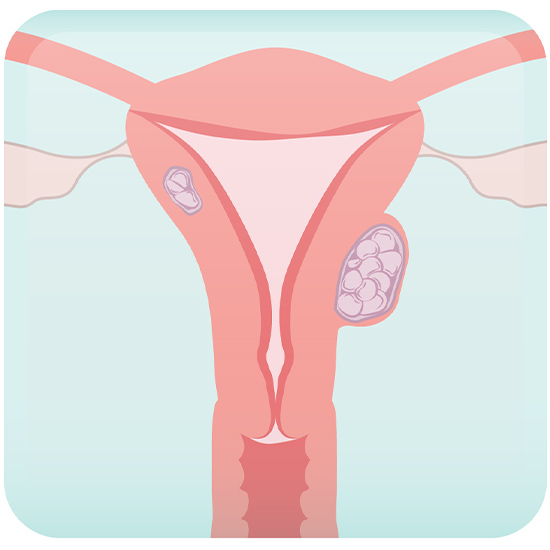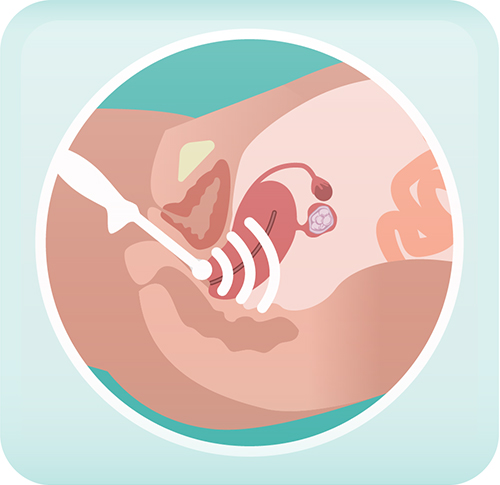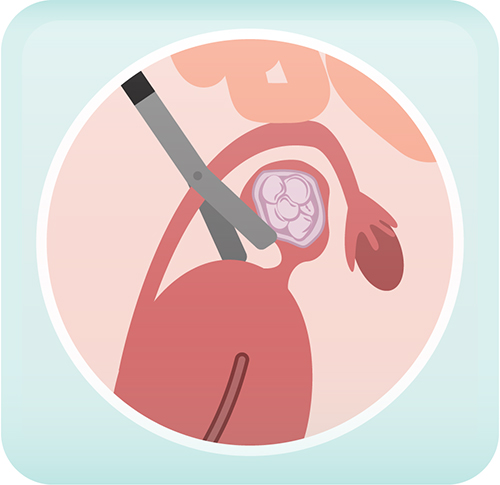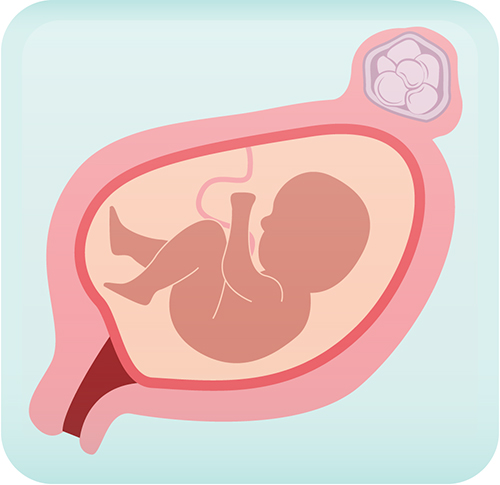Fibroids: General Information
Fibroids are benign tumors (not cancerous) of the smooth muscle of the uterus. Up to 70% of women have
fibroids. Some fibroids are small and people don’t even know they have them because they have no symptoms.
Other fibroids can cause significant symptoms.
There are four different types of fibroids depending on their location.
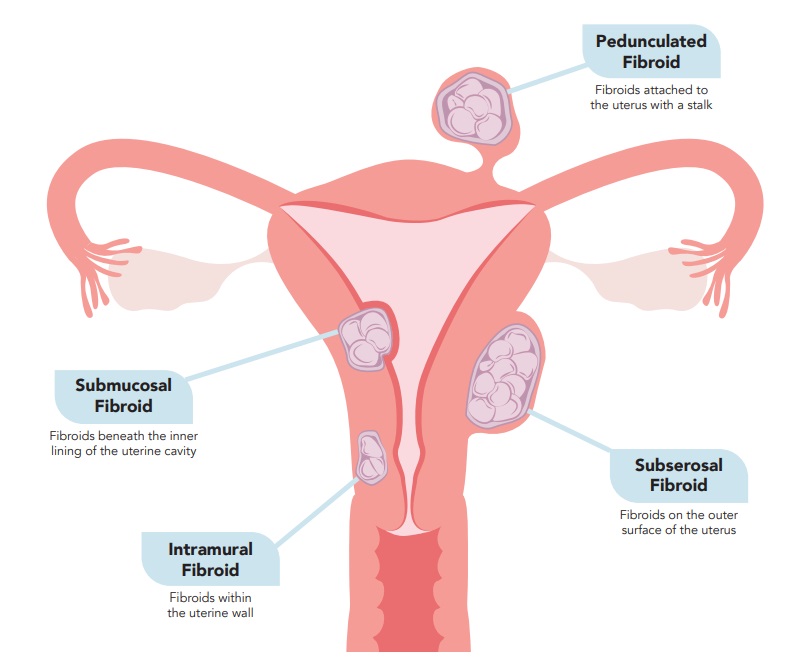
Symptoms of Fibroids
Symptoms of fibroids can vary depending on the number, type, location, and size of the fibroids.
- Abnormal Uterine Bleeding – change in flow and duration of menstrual period
- Bulk Symptoms – bigger or multiple fibroids can put pressure on the bowels and/or urinary
bladder causing pelvic pain and pressure sensation, discomfort, constipation, difficulty with
urination, and painful intercourse - Fertility and Pregnancy-Related Concerns
Fibroids: Evaluation
History and Physical Examination
Your doctor may wonder if you have fibroids based on symptoms you report. Furthermore, they may be able to feel your fibroids during a pelvic and/or abdominal examination. These findings may prompt your doctor to order further imaging or other investigations.
Imaging
Ultrasound
The most common imaging ordered is an ultrasound (pelvic ultrasound and transvaginal ultrasound) to diagnose fibroids and document their size and location (i.e. fibroid mapping).
Sonohysterogram
A sonohysterogram may also be suggested to assess the
cavity of the uterus and determine if any submucosal
fibroids are present that indent into the uterine cavity.
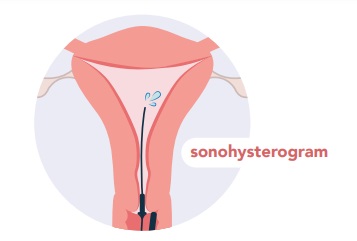
MRI or CT Scan
Occasionally, MRI or CT scans may be ordered if there are any worrisome features to your fibroids.
Imaging also helps to assess structures like the kidneys and ureters, which can be distorted in the setting of larger fibroids, putting pressure on these structures.
Further Investigations
Apart from imaging, other tests may be suggested based on your symptoms and physical examination.
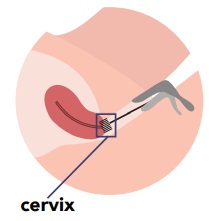
Pap Test
A pap test is an office procedure that involves a speculum examination. Your doctor will use a small brush to gently sample cells from the cervix so they can be checked for any precancerous or cancerous changes.
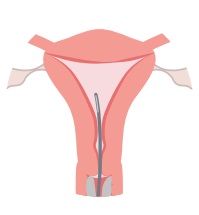
Endometrial Biopsy
A short office procedure during which a
speculum is inserted into the vagina and a
small pipelle is placed through the opening of
the cervix, and into the uterus to take a sample
of the lining of the uterus. Some people find
this procedure uncomfortable and cannot
tolerate having it done in the office. Your
doctor may recommend a short procedure in
the operating room under anesthesia instead.
Bloodwork
- CBC (complete blood count) and Ferritin – People who present with heavy or abnormal bleeding will likely have bloodwork to check iron levels and hemoglobin.
- Creatinine – This test reflects kidney function. Your doctor may order this test if there is suspicion of your fibroids putting pressure on your kidneys or ureters.
Fibroids: Treatment
Fibroids are benign growths of the muscle layer of the uterus. They are very common in reproductive age women, increasing with age and found in up to 70% of women over the age of 50. Women may experience abnormal uterine bleeding or bulk symptoms (symptoms caused by pressure from the fibroids). Treatment of fibroid symptoms depend on both location and size of the fibroids. There are four main types of fibroids:

Treating Fibroids
If you have fibroids but have no symptoms, no treatment is required although your doctor may recommend periodic imaging or follow-up. If you have symptoms, your doctor will suggest treatments based on those symptoms, as well as the location and size of the fibroid(s).
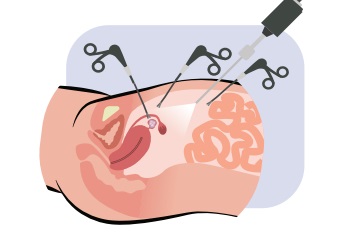
Bulk symptoms
Bulk symptoms such as pelvic pain, discomfort, and
pressure, can be managed with medications to shrink
fibroids (e.g. Leuprolide) or with a procedure (uterine
artery embolization, myomectomy, hysterectomy).
Fertility and Pregnancy-Related Concerns
If fibroids are causing difficulty with conception or you have had pregnancy-related concerns in past pregnancies, your gynaecologist may suggest removal of the fibroid(s). Again, the size and location of the fibroids will determine the best management.
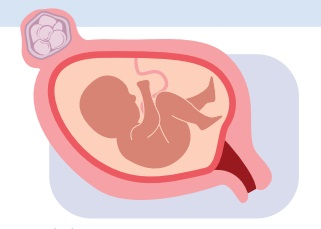
Bleeding
Bleeding is one of the most common concerns associated with fibroids. If bleeding is heavy, it can cause anemia (low blood iron levels). There are different ways to address this:
Not all patients can be treated with the options listed below. Your doctor will tell you whether you are a suitable candidate for these treatment options
Medical Management
Apart from imaging, other tests may be suggested based on your symptoms and physical examination.
Examples of Non-hormonal Options
- Non-steroidal Anti-inflammatory Drugs (NSAIDs) such as
Ibuprofen and Naproxen can be taken during a period to reduce the amount of menstrual blood flow. - Tranexamic acid (TXA) is a medication that slows breakdown of clotted blood, and can therefore decrease menstrual flow.

Example of Hormonal Options
- Combined Hormonal Contraception (e.g. Oral Contraceptive Pills), which have both estrogen and progesterone, act to stabilize and thin the lining of the uterus. This decreases blood flow during a menstrual period. CHCs can also be taken in a way that may allow you to skip your period altogether.
- Progesterone Intrauterine Device (IUD) – The progesterone will thin the lining of the uterus to decrease the amount of bleeding.
- GnRH agonist (Leuprolide) – This is an injection given every 1 to 3 months (depending on dose). It blocks ovaries from producing estrogen and progesterone causing medical menopause. It helps with bleeding but may also help to shrink fibroids. However, since estrogen is needed for bone health, “add-back therapy” is advised (e.g. Norethindrone Acetate), a medication with estrogenic properties.

Surgical Management
- Uterine Artery Embolization – This is a procedure that decreases blood supply to the uterus and may
also result in a shrinkage of your fibroids. Not all
patients are candidates for this procedure. It is done by an Interventional Radiologist. - Myomectomy (removal of the fibroid) – Depending
on fibroid location and size, different techniques can be used. For example, if the fibroid is small and sits inside the uterine cavity, then hysteroscopy may be used. If the fibroids are in the uterine wall and are not too large, then minimally invasive approach may be used – laparoscopy. However, if the fibroid is big or
there are multiple fibroids, then an open/abdominal
procedure may be suggested. - Hysterectomy (removal of uterus) – This may be
suggested to patients who are looking for definitive surgical management and who have no plans to carry
future pregnancies.
Fibroids: Fertility and Pregnancy
Fibroids are benign tumors (not cancerous) of the smooth muscle of the uterus. Up to 70% of women have fibroids. Some fibroids are small and people don’t even know they have them because they have no symptoms. Other fibroids can cause significant symptoms.
There are four different types of fibroids depending on their location.

Symptoms of Fibroids
Symptoms of fibroids can vary depending on the number, type, location, and size of the fibroids.
- Abnormal Uterine Bleeding – change in flow and duration of menstrual period
- Bulk Symptoms – bigger or multiple fibroids can put pressure on the bowels and/or urinary
bladder causing pelvic pain and pressure sensation, discomfort, constipation, difficulty with
urination, and painful intercourse - Fertility and Pregnancy-Related Concerns
Fertility- and Pregnancy-Related Concerns
Fertility Concerns
Infertility – Depending on the size and location of fibroids, some fibroids can distort the uterine cavity and ultimately lead to difficulties getting pregnant.
Miscarriage – When fibroids distort the uterine cavity, there can be instances where it is more challenging for a pregnancy to continue. On occasion, this may result in a miscarriage that most commonly takes place in the first trimester.
Examples of Pregnancy Concerns
Malpresentation of a Fetus – Most babies are positioned vertex (“head down”) closer to the due date, which is an ideal position for vaginal delivery. However, depending on the size and location of a fibroid, it can interfere with a baby’s positioning inside the uterus. Caesarean section may be required for delivery.
Preterm Labour – Going into labour before 37 weeks is considered preterm (early). Depending on the size and location, fibroids can contribute to preterm labour.
Labour Dystocia – Larger fibroids that are located in the lower part of the uterus can impede the baby’s passage through the birth canal.
Postpartum Hemorrhage – Fibroids found within the uterine wall can prevent the uterus from contracting appropriately after delivery, therefore contributing to excessive bleeding immediately after giving birth. Pain – As pregnancy progresses, the uterus grows and the architecture of the uterine wall changes, causing decreased blood flow to fibroids. Without blood supply, fibroids can degenerate causing local inflammation and pain. This is more common in the second and third trimester.
Not all fibroids are cause for concern in pregnancy. Many are found, by chance, during an early pregnancy ultrasound. If you are pregnant and have fibroids, your doctor will speak to you about the potential impact of fibroids on your pregnancy and labour.

If you have fibroids and are having difficulty getting pregnant, your doctor will speak to you about the impact of your fibroids on your fertility. It is possible your doctor will recommend removing your fibroid(s).

